The Superfluent Method
From Intermediate to Fluent
Unlike most language learning apps, which are built for beginners, we're focused on helping more advanced learners reach true conversational fluency.
If you haven't already heard our thoughts about this gaping hole in the language learning market, I encourage you to read this piece first:
Otherwise, let's deep dive into the details of what we've built to enable people to finally reach their fluency goals.
I'm pleased to introduce you to the Superfluent Method.
How fluent are you?
Ask someone this question and enjoy the bizarre word soup of an answer you'll receive: "Ummm… well… I took Spanish back in high school… but then I stopped for a while… and now I have a 200-day Duolingo streak, so… I don't know… sorta fluent?"
Fluency is notoriously difficult to define.
Even the gold standard for fluency level equivalency, known as CEFR, is comically confusing. Read the 1-sentence descriptors for each of their 6 levels and let me know if you can tell the difference, let alone which level you're at.
To quote Lord Kelvin: "If you can't measure it, you can't improve it."
The Fluency Score
Luckily for us, well-defined metrics can cut through the confusion and give us a more straightforward answer.
After a single conversation on Superfluent, we can assess, to a high degree of accuracy, your level of fluency and assign it to a numerical value.
The Fluency Score is built on top of a handful of underlying key metrics:
- Reaction Speed: How quickly you start speaking after the person you're talking to stops
- Quality & Complexity: There's a big difference between 3-word answers and 3-sentence soliloquies
- Reply Speed: How quickly you speak in terms of words per minute
- And dozens more...
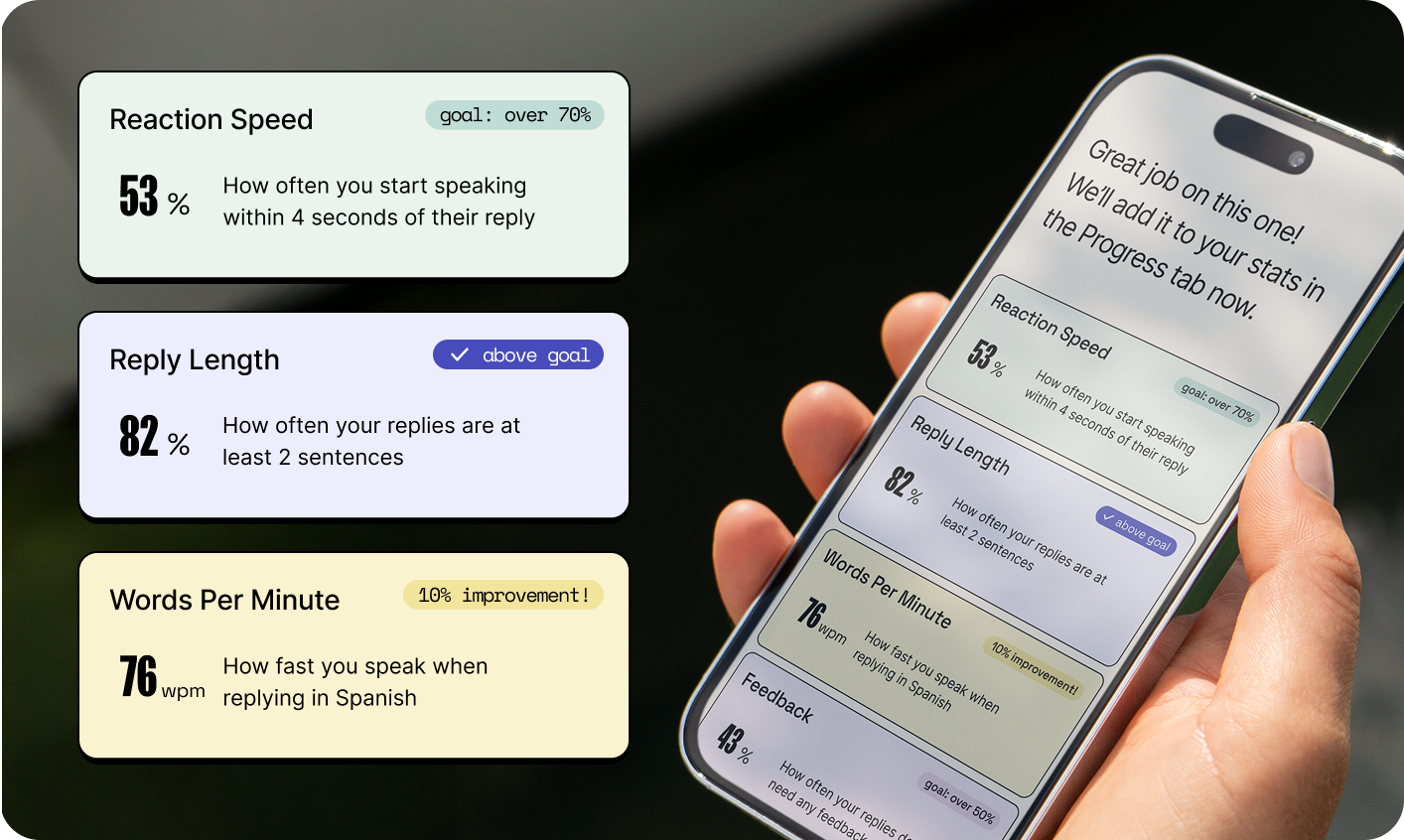
If we used the same formula to assess your conversational skills in your native language, you'd obviously score off the charts.
But in a foreign language (even if you're at the Intermediate level or beyond), the results can be quite illuminating.
Needless to say, this type of analysis is not possible in the exercise-based apps like Duolingo & Babbel. How quickly you can "repeat after me" unfortunately contains slightly less information about your true level of fluency…
Metrics as Motivation
To quote Peter Drucker: "What gets measured, gets managed."
And this couldn't be more true when it comes to language learning. What you measure as an app directly motivates the behavior of your users and changes the outcome.
Most language learning apps measure and thus motivate based on gamification, with the focus on the length of your streak, amount of XP, number of gold coins, etc.
You can see the downstream effects of this in user interviews where they could just as easily be describing how to play Candy Crush as "how to play" learning Spanish.
And, to be clear, this is the right approach for beginners who are just learning the basics, but not for more advanced learners who actually want to get fluent.
So Superfluent takes a radically different approach.
We measure and thus motivate based on the Fluency Score and its underlying metrics.
Every conversation you have on the app adds another set of data points and lets you track your progress over time. You know exactly how well you're doing and where you should focus your attention. #quantifiedself
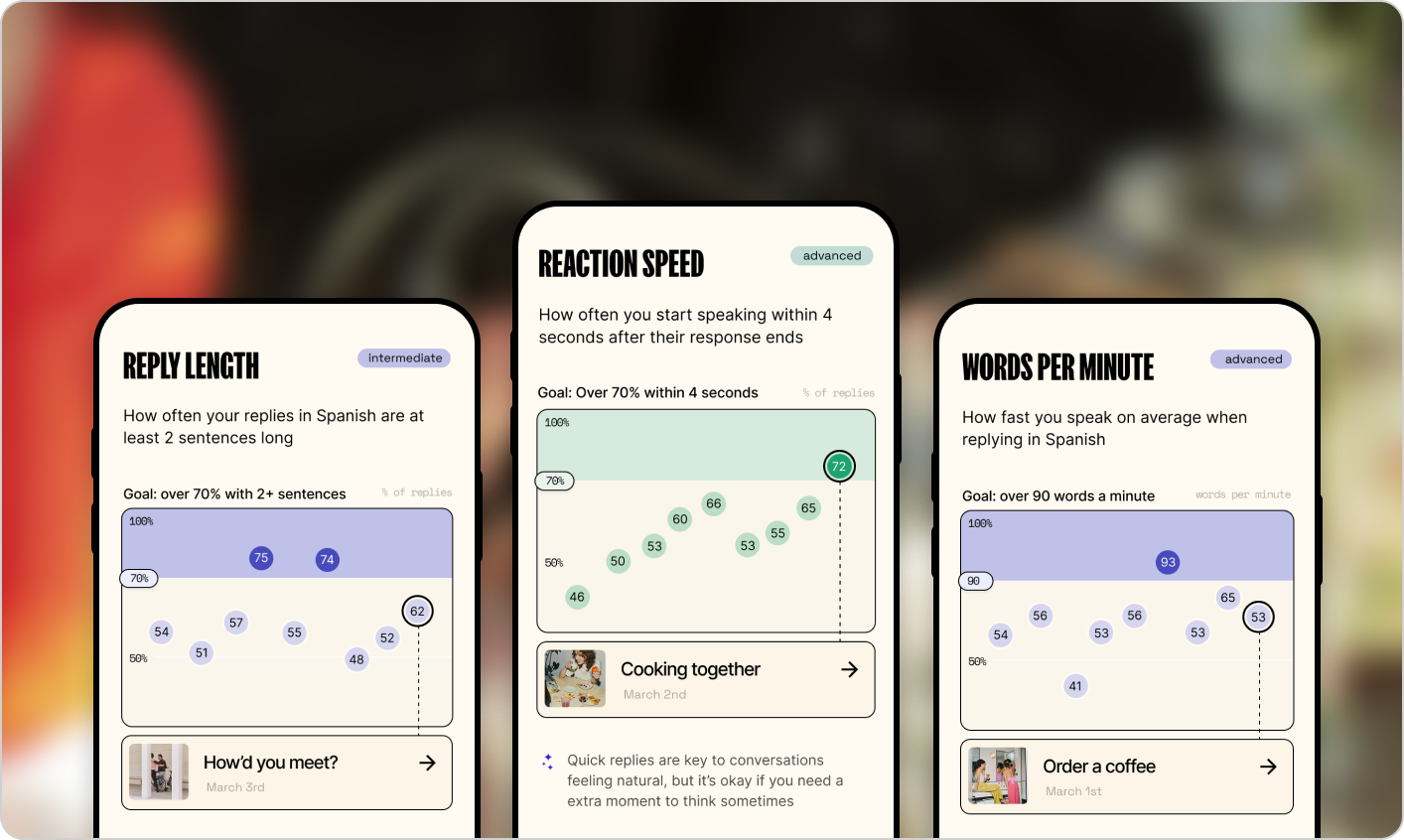
Again, you can see the downstream effects of this by watching how Superfluent users change their behavior after seeing their metrics for the first time.
They'll challenge themselves in the next conversation to speak quicker, with longer sentences, using more complex words, etc and are eager to see if they did better than last time.
But that doesn't mean we don't believe in good ol' gamification... We do.
Learning a language is incredibly difficult, so you might as well have a good time along the way — external motivation only helps.
And we make it pretty easy to bring your streak over from another app if you don't want to leave it behind.
Increasing Levels of Complexity
That all being said, burying an Intermediate learner in dozens of complicated metrics is clearly not a good solution either.
So we've built a system that meets learners where they're at and challenges them appropriately to make progress every day towards the next level.
We do this by giving them 1-2 key metrics to focus on based on the level they're at. And then layering these on top of each other as the complexity increases.
Aka starting with 1 ball, adding a second, and finally a third as you learn to juggle a new language.
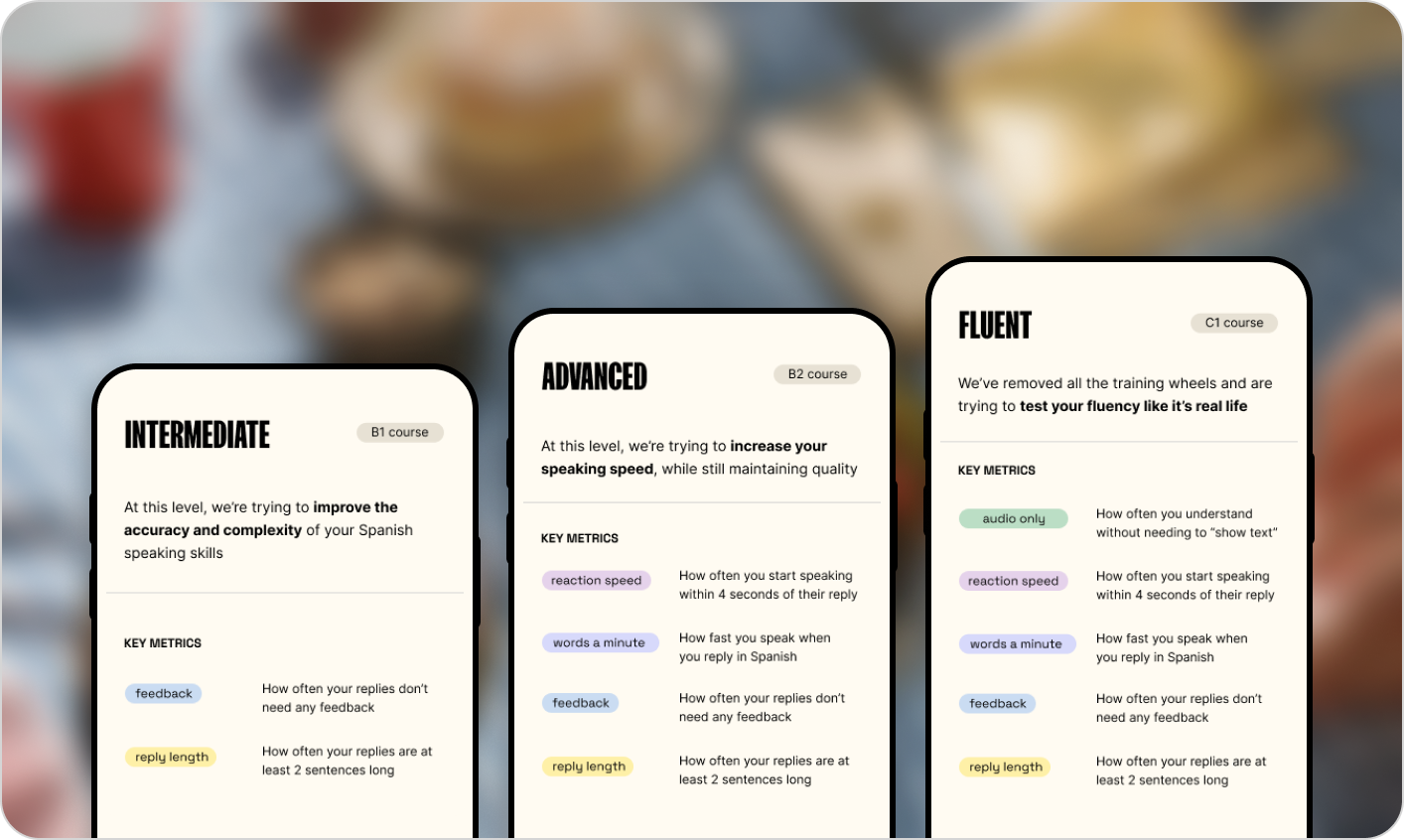
Language Islands
I can order a coffee like a pro. I can survive a few simple small-talk questions from a co-worker. And I can sound like a complete idiot trying to explain why my stomach hurts to a doctor.
This is how fluency actually works. We are situationally fluent, to varying degrees.
I am "coffee shop" super fluent, "coworker" sorta fluent, "doctor's office" not fluent (yet).
So we've structured Superfluent based on hundreds of real-world scenarios for you to practice and eventually perfect.
Our philosophy is based on the "language island" concept. To reach a new island, you need to put in the work to practice it and get comfortable.
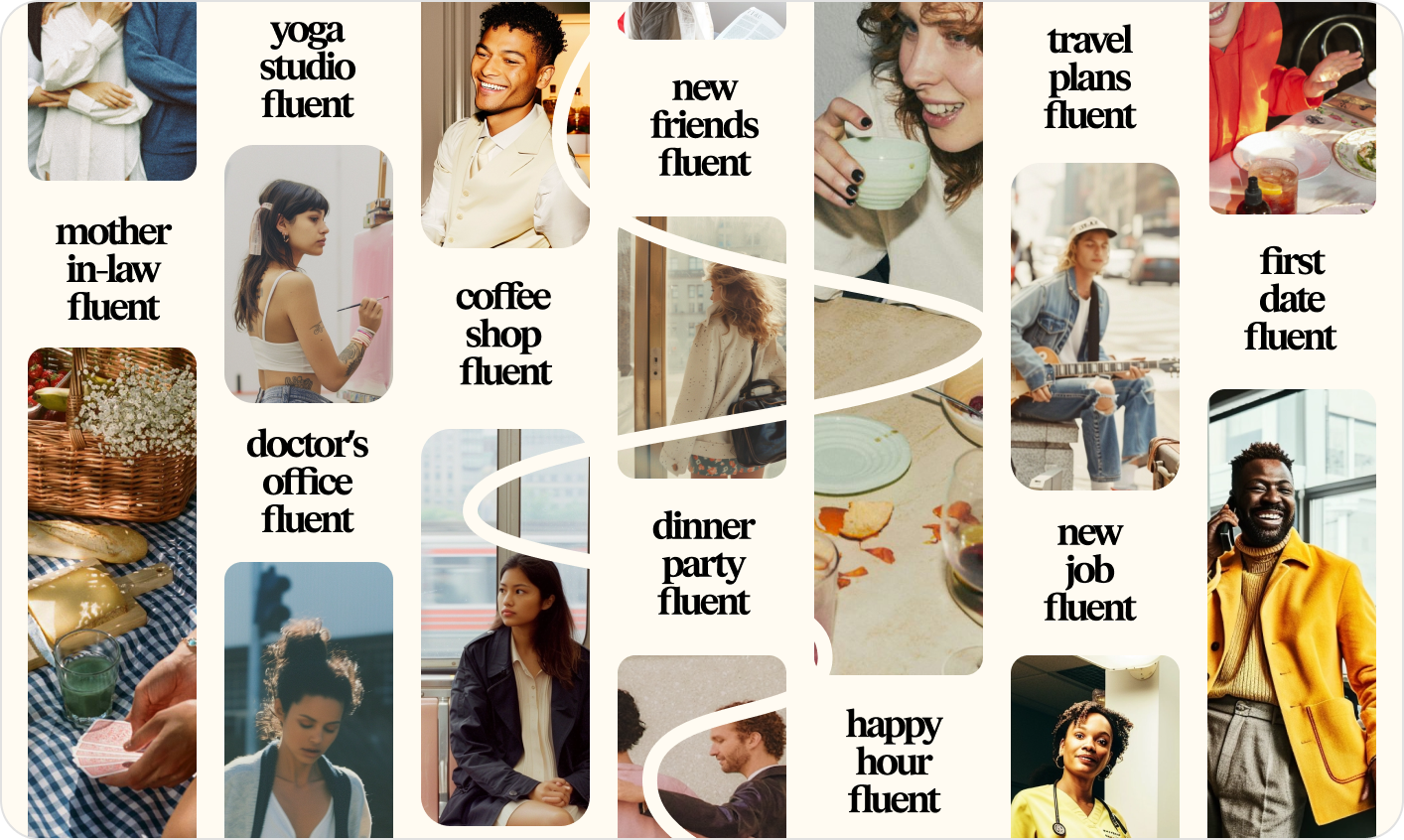
Endless Feedback Loop
It's pretty rare to get helpful feedback when speaking a new language in the real world.
Maybe a confused look or a "did you mean…?" lets you know that you messed up (or god forbid the soul-crushing "let's just switch to English").
But you're unlikely to receive a full transcript covered in red ink with detailed explanations for everything you can do to improve for next time.
Superfluent does this — with 3 types of personalized feedback:
- Every reply: specific feedback on what you just said and how to improve it
- Every conversation: key learning moments to review again to make sure they stick
- Every day: which fluency metrics you need to focus on to continue making progress
When asked, the majority of learners on Superfluent say that getting feedback like this is, hands down, their favorite feature.
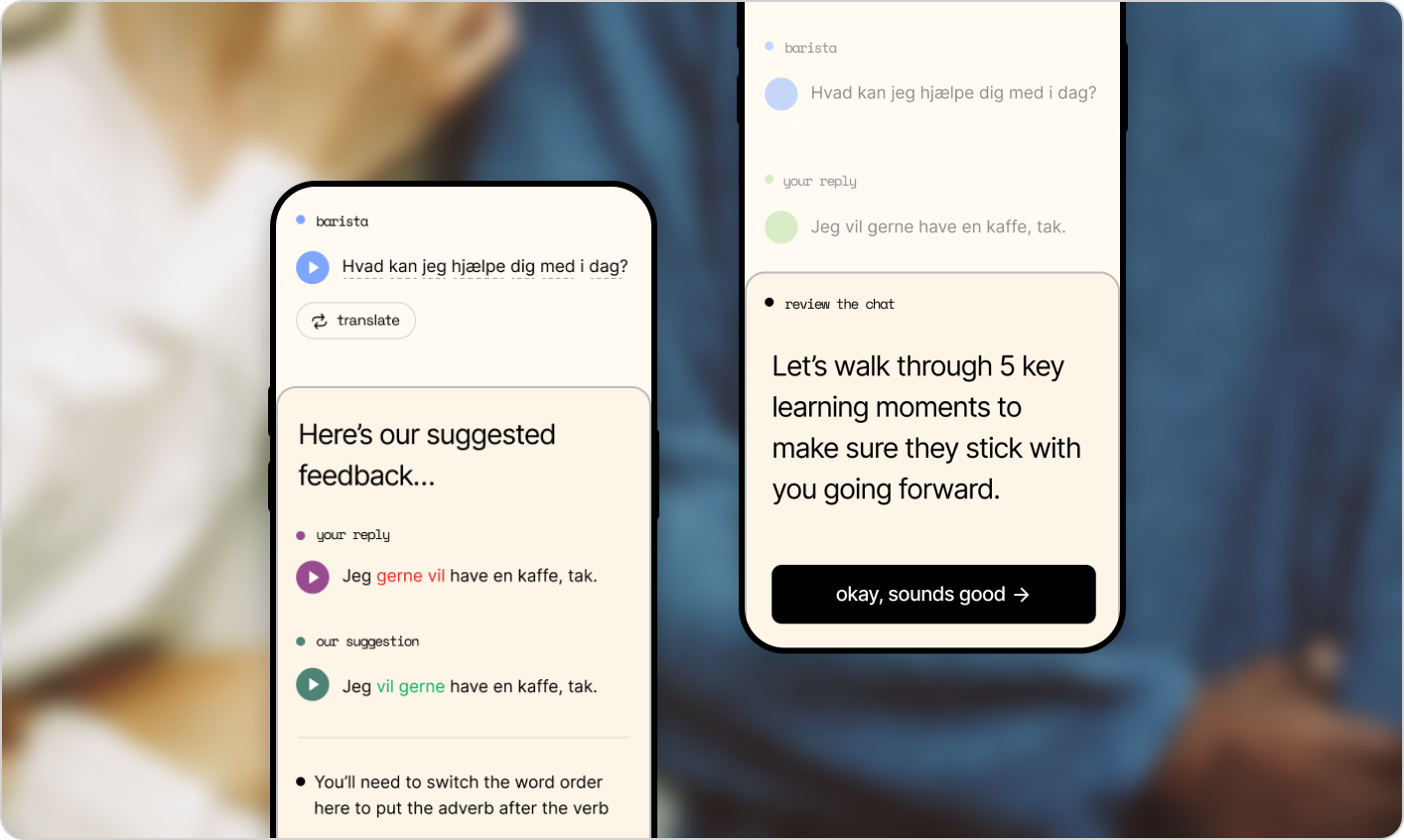
We're just getting started
Put all these pieces together and you have a solid foundation in place for achieving your fluency goals.
Finally, the road from Intermediate to Fluent has been paved.
It still has a few speed bumps along the way, though, that we need to take care of before it becomes a highway.
So stay tuned for what's next. We're still in free/public beta test mode, but have some fun surprises coming soon ;)
— Sam Nevada
Founder of Superfluent